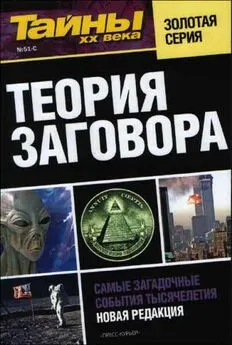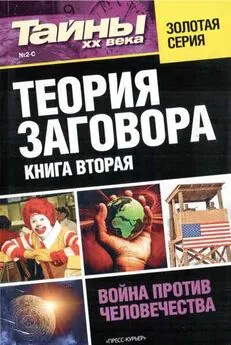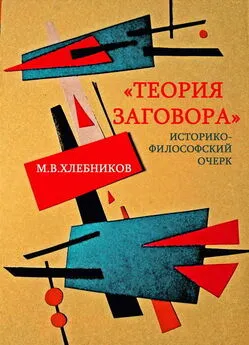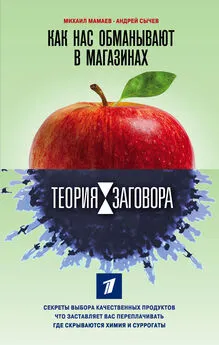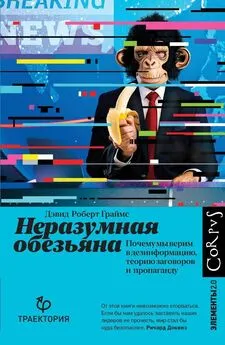Дэвид Граймс - Неразумная обезьяна [Почему мы верим в дезинформацию, теории заговора и пропаганду] [litres]
- Название:Неразумная обезьяна [Почему мы верим в дезинформацию, теории заговора и пропаганду] [litres]
- Автор:
- Жанр:
- Издательство:Литагент Corpus
- Год:2020
- ISBN:978-5-17-121922-2
- Рейтинг:
- Избранное:Добавить в избранное
-
Отзывы:
-
Ваша оценка:
Дэвид Граймс - Неразумная обезьяна [Почему мы верим в дезинформацию, теории заговора и пропаганду] [litres] краткое содержание
Неразумная обезьяна [Почему мы верим в дезинформацию, теории заговора и пропаганду] [litres] - читать онлайн бесплатно ознакомительный отрывок
Интервал:
Закладка:
В течение многих лет мне сказочно везло с поддержкой моих научных занятий: меня окружали прекрасные коллеги, я учился у фантастических наставников. Мне бы хотелось, пользуясь случаем, принести мою благодарность Энде МакГлинн, Дэвиду Базанте и Майклу Партриджу – эти люди приняли участие во мне, когда я был еще молодым неоперившимся ученым; именно они определили мой путь и мой взгляд на то, что могут ученые предложить миру. Благодарен я также и университетам, где мне выпало трудиться – Оксфордскому университету, Университету Квинс в Белфасте и Дублинскому городскому университету, – как за прекрасные условия работы, так и за поддержку, когда в этой работе случались сбои.
Мне повезло и с друзьями, любящими науку, с коллегами, чья поддержка была для меня поистине бесценной. Это Анита Берн, Ронан Макманус, Роберт О’Коннор, Берни Квинн, Софи Кремен, Джен Кин, Леони Хиллард, Падрейг МакЛафлин, Энтони Уорнер, Сьюзен Митчелл, Дороти Бишоп, Кьяра Келли, Даниэла Роблс, Айлин О’Салливен, Тереза Ньюмен, Донал Бреннан, Майкл Маршалл, Дэвид Колхаун, Дэвид Горски и многие, многие другие, кого я не упомянул из-за ограниченности памяти или по недомыслию.
Есть, однако, самые близкие мне люди, которые всегда поддерживали меня, помогали оформлять мои идеи в слова и прощали мне ошибки и несдержанность. Таких людей настолько много, что я не могу упомянуть их всех, поэтому выражаю особую благодарность Матильде Эрню, а также Дэнни Мюррею, Лоре Бреннан и Грэхему Китли – за все, что я не в силах высказать. И наконец, самое важное: всем, что у меня есть, я обязан в первую очередь моей семье – моему поистине фантастическому брату Стивену и моим потрясающим родителям Патрисии и Брендану. Они сделали меня тем человеком, каким я нынче являюсь; без них эта книга попросту не могла бы появиться.
Библиография
H. Rosling. Factfulness . Flammarion, 2019.
U. Eco. Eternal fascism // New York Review of Books 22 (1995). [Эко У. Вечный фашизм . В кн.: Эко У. Пять эссе на темы этики / Перевод Е. Костюкович. М.: Corpus, 2012.]
S. Wineburg et al. Evaluating information: The cornerstone of civic online reasoning // Stanford Digital Repository (2016).
M. Gabielkov et al. Social clicks: What and who gets read on Twitter? // ACM SIGMETRICS Performance Evaluation Review 44, no.1 (2016): 179–192.
W. Hofmann et al. Morality in everyday life // Science 345, no.6202 (2014): 1340–1343.
W. J. Brady et al. Emotion shapes the diffusion of moralized content in social networks // Proceedings of the National Academy of Sciences 114, no.28 (2017): 7313–7318.
S. Vosoughi, D. Roy, S. Aral. The spread of true and false news online // Science 359, no.6380 (2018): 1146–51.
Office of the Director of National Intelligence. Assessing Russian activities and intentions in recent US elections, Unclassified Version (2017).
C. Paul, M. Matthews. The Russian “firehose of falsehood” propaganda model, Rand Corporation (2016): 2–7.
L. Hasher, D. Goldstein, T. Toppino. Frequency and the conference of referential validity // Journal of Verbal Learning and Verbal Behavior 16, no.1 (1977): 107–112.
T. Goertzel. Belief in conspiracy theories // Political Psycholog y (1994): 731–742.
K. E. Stanovich. Dysrationalia: A new specific learning disability // Journal of Learning Disabilities 26, no.8 (1993): 501–515.
C. K. Morewedge et al. Debiasing decisions: Improved decision making with a single training intervention // Policy Insights from the Behavioral and Brain Sciences 2, no.1 (2015): 129–140.
R. E. Nesbitt, L. Ross. Human Inference: Strategies and Shortcomings of Social Judgement . Eaglewood Cliffs, NJ; Prentice Hall, 1980.
FEMA 403. World Trade Center Building Performance Study. Federal Emergency Management Agency, 2002.
K. D. Thompson. Final Reports from the NIST World Trade Center Disaster Investigation (2011).
J. McCain. Debunking 9/11 myths: Why conspiracy theories can’t stand up to the facts . Sterling Publishing Company, Inc., 2006.
T. Goertzel. The Conspiracy meme // Skeptical Inquirer , 35 (1) (2011).
D. R. Grimes. On the viability of conspiratorial beliefs // PloS one 11.1 (2016): e0147905.
G. H. Hardy. A mathematician’s apolog y . Cambridge University Press, 1992.
S. Singh. The code book: the evolution of secrecy from Mary, Queen of Scots, to quantum cryptography . Doubleday. 1999.
B. Russell. History of western philosophy: Collectors edition . Routledge, 2013.
The World Health Organisation. Electromagnetic fields and public health: mobile phones (2014).
INTERPHONE Study Group. Brain tumour risk in relation to mobile telephone use: results of the INTERPHONE international case-control study // International Journal of Epidemiolog y 39.3 (2010): 675–694.
P. Frei et al. Use of mobile phones and risk of brain tumours: update of Danish cohort study // British Medical Journal 343 (2011): d6387.
J. Schuz et al. Cellular phones, cordless phones, and the risks of glioma and meningioma (Interphone Study Group, Germany) // American Journal of Ep-idemiolog y 163.6 (2006): 512–520.
D. R. Grimes, D. V. M. Bishop. Distinguishing polemic from commentary in science: Some guidelines illustrated with the case of Sage and Burgio (2017) // Child development 89.1 (2018): 141–7.
J. Ronson. So you’ve been publicly shamed . Riverhead Books, 2016.
J. A. Greene. “For Me There Is No Substitute”: Authenticity, Uniqueness, and the Lessons of Lipitor // American Medical Association Journal of Ethics, 12.10 (2010): 818–823.
United States Bureau of Chemistry, Service and Regulatory Announcements, Issues 21–30 (1917).
R. Wiseman, D. West. An experimental test of psychic detection // The Police Journal 70.1 (1997): 19–25.
D. Druckman, J. A. Swets. Enhancing human performance: Issues, theories, and techniques . National Academies Press, 1988.
F. C. Bing. The book forum // Journal of the American Medical Association (1971).
H. Hemila et al. Vitamin C for preventing and treating the common cold // Cochrane Database of Systematic Reviews (2013).
D. J. A. Jenkins et al. Supplemental Vitamins and Minerals for CVD Prevention and Treatment, Journal of the American College of Cardiology 71 (22) (2018).
J. W. Wheeler-Bennett. Ludendorff: The Soldier and the Politician // The Virginia Quarterly Review 14 (2): 187–202 (1938).
B. F. Skinner. Superstition in the pigeon // Journal of Experimental Psycho-log y 38, (1948) 168–172.
B. Goldacre. Bad Science . London, Fourth Estate, 2008.
B. Deer. How the case against the MMR vaccine was fixed // British Medical Journal 342 (2011).
F. Godlee, J. Smith. Wakefield’s article linking MMR vaccine and autism was fraudulent // British Medical Journal 342 (2011).
F. E. Andre et al. Vaccination greatly reduces disease, disability, death and inequality worldwide // Bulletin of World Health Organization 86: 140–146 (2008).
D. Kahneman. Thinking, fast and slow . New York: Farrar, Straus and Giroux, 2011.
University of Virginia Center for Politics, Reuters/Ipsos/UVA Center for Politics Race Poll (2017).
D. Canning, S. Raja, A. S. Yazbeck. Africa’s demographic transition: dividend or disaster? // The World Bank (2015).
A. Rutherford, A Brief History of Everyone Who Ever Lived: The Stories in Our Genes . Weidenfeld & Nicolson, 2016.
T. C. Daley et al. ‘IQ on the rise: The Flynn effect in rural Kenyan children // Psychological Science 14 (3), (2003), 215–219.
S. Ritchie. Intelligence: All that matters . Hodder & Stoughton, 2015.
N. W. Bailey, M. Zuk. Same-sex sexual behavior and evolution // Trends in Ecolog y & Evolution 24.8 (2009): 439–446.
G. Galilei. Dialogue Concerning the Two Chief World Systems (1632).
C. Darwin. On the Origin of Species (1859).
National Academies of Sciences, Engineering, and Medicine. The health effects of cannabis and cannabinoids: The current state of evidence and recommendations for research. National Academies Press, 2017.
Joint Committee on Health. Report on Scrutiny of the Cannabis for Medicinal Use Regulation Bill 2016. Houses of the Oireachtas, 2017.
G. Beale. The cult of T. D. Lysenko: thirty appalling years // Science Journal (1969).
L. Festinger. When Prophecy Fails: A Social and Psychological Study of a Modern Group That Predicted the Destruction of the World . Harper-Torch-books, 1956.
M. R. Allen et al. IPCC fifth assessment synthesis report-climate change 2014 synthesis report (2014).
P. Diethelm, M. McKee. Denialism: what is it and how should scientists respond? // European Journal of Public Health 19.1 (2009): 2–4.
S. Weart. Global warming: How skepticism became denial // Bulletin of the Atomic Scientists 67.1 (2011): 41–50.
S. Lewandowsky, K. Oberauer, G. E. Gignac. NASA faked the moon landing – therefore, (climate) science is a hoax: An anatomy of the motivated rejection of science // Psychological Science 24.5 (2013): 622–33.
Читать дальшеИнтервал:
Закладка:
![Обложка книги Дэвид Граймс - Неразумная обезьяна [Почему мы верим в дезинформацию, теории заговора и пропаганду] [litres]](/books/1057033/devid-grajms-nerazumnaya-obezyana-pochemu-my-verim.webp)

